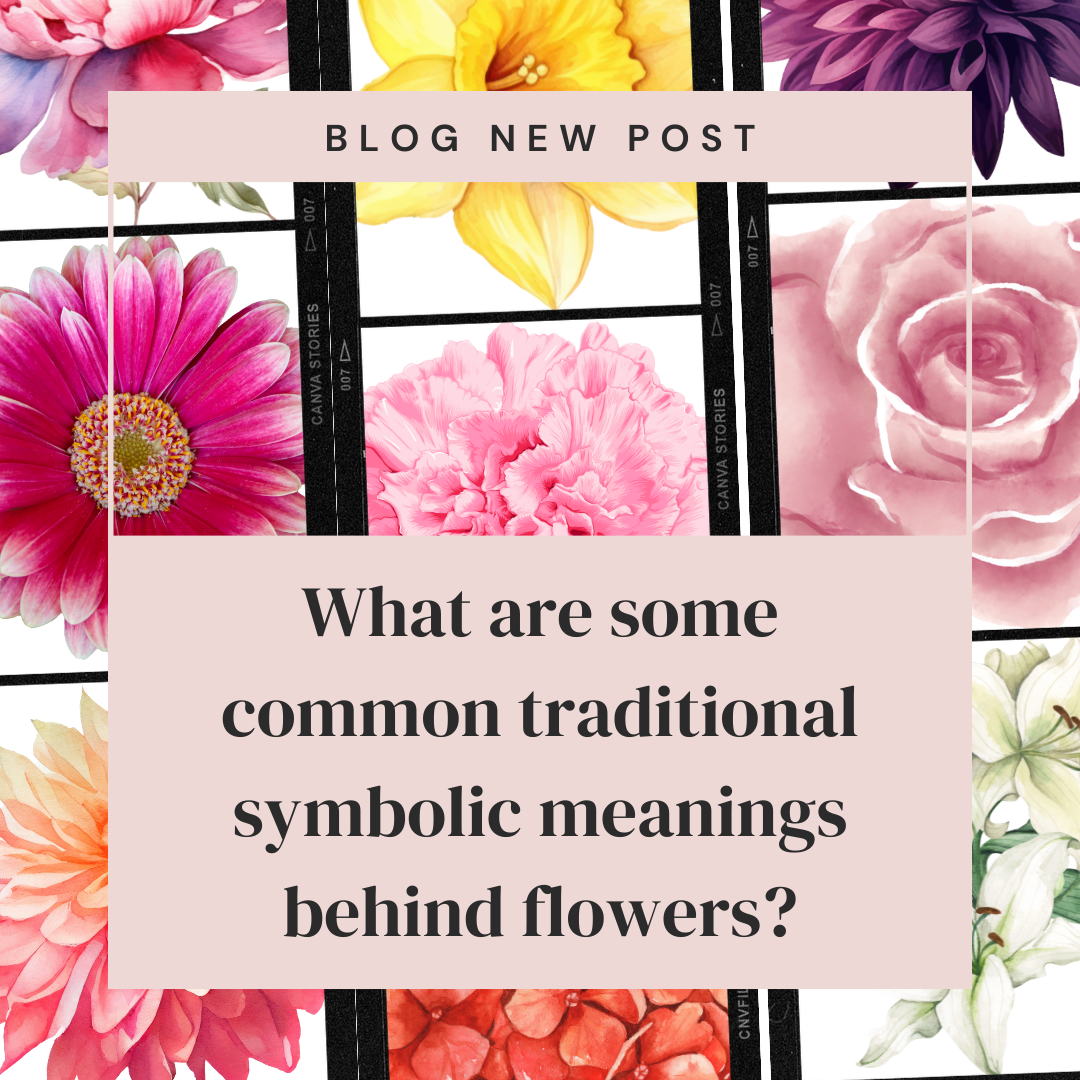
Traditional Flower Meanings
Share
The Language of Flowers: Understanding Traditional Flower Meanings
Flowers have long been used as a way to convey emotions, sentiments, and messages without the need for words. This practice, known as floriography or the language of flowers, dates back centuries and was particularly popular in the Victorian era. Each bloom carries its own unique symbolism, allowing people to express feelings ranging from love and admiration to sympathy and regret. Understanding these traditional flower meanings can add depth and significance to the bouquets you give and receive. Here’s a guide to some of the most common flowers and their traditional meanings.
Roses are perhaps the most iconic flowers when it comes to symbolism. While they are universally associated with love, the meaning of roses can vary depending on their color:
- Red Roses: Love, passion, and romance. Red roses are the quintessential symbol of deep affection and desire.
- White Roses: Purity, innocence, and reverence. White roses are often used in weddings and can also symbolize a new beginning.
- Yellow Roses: Friendship, joy, and caring. Yellow roses convey warmth and happiness, making them perfect for celebrating friendships.
- Pink Roses: Grace, gratitude, and admiration. Pink roses express gentle emotions, making them a great choice for expressing thanks or admiration.
- Orange Roses: Enthusiasm and fascination. Orange roses convey excitement and energy, often symbolizing attraction.
Lilies are another flower with rich symbolism, often associated with purity and renewal. The specific meaning of lilies can also depend on their color and variety:
- White Lilies (Madonna Lily): Purity, virtue, and the divine. White lilies are often associated with the Virgin Mary and are commonly used in religious ceremonies.
- Stargazer Lilies: Ambition and prosperity. Stargazer lilies, with their striking appearance, symbolize aspirations and success.
- Calla Lilies: Elegance and beauty. Calla lilies, with their sleek, trumpet-shaped blossoms, are often used in wedding bouquets.
Tulips, with their simple and elegant blooms, are often associated with perfect love. However, their meaning can vary by color:
- Red Tulips: True love and passion. Red tulips are a declaration of love and are perfect for romantic gestures.
- Yellow Tulips: Cheerfulness and hope. Yellow tulips represent sunshine and happiness.
- Purple Tulips: Royalty and admiration. Purple tulips are often associated with elegance and sophistication.
- White Tulips: Forgiveness and respect. White tulips symbolize apologies and convey a sense of humility.
Sunflowers are known for their bright, cheerful appearance and their ability to turn toward the sun. They symbolize adoration, loyalty, and longevity. Sunflowers are often given to express admiration and bring positivity into someone’s life. Their vibrant yellow color also makes them a symbol of happiness and optimism.
Daisies are often associated with innocence, purity, and new beginnings. The simple beauty of the daisy has made it a symbol of childhood and a favorite flower for celebrating new starts, such as births or new ventures. White daisies, in particular, symbolize purity and loyal love.
Orchids are exotic flowers that symbolize beauty, strength, and luxury. They are often associated with rare and delicate beauty, making them a symbol of refinement and elegance. Orchids also represent love, particularly in cultures where they are seen as a sign of fertility and virility.
Carnations are rich in symbolism and are often used to convey deep feelings of love and fascination. Their meaning can also vary by color:
-Red Carnations: Admiration and deep love. Red carnations symbolize strong, passionate love.
-White Carnations: Pure love and good luck. White carnations are often associated with innocence and the idea of pure, unconditional love.
-Pink Carnations: A mother's love. Pink carnations are often given on Mother’s Day to honor the love and gratitude we feel for our mothers.
Lavender, with its soothing fragrance and soft purple hue, symbolizes serenity, grace, and calm. It is often used to express devotion and peaceful love. Lavender is also associated with purity and can be given to someone who brings calm and tranquility into your life.
Flowers are more than just beautiful decorations; they are rich with meaning and symbolism. By understanding the traditional meanings of different flowers, you can add a layer of significance to the bouquets you create and the blooms you choose to give. Whether you’re expressing love, friendship, or admiration, the right flower can help convey your message with grace and elegance. So next time you pick out flowers, consider their traditional meanings and let your bouquet speak for you.
